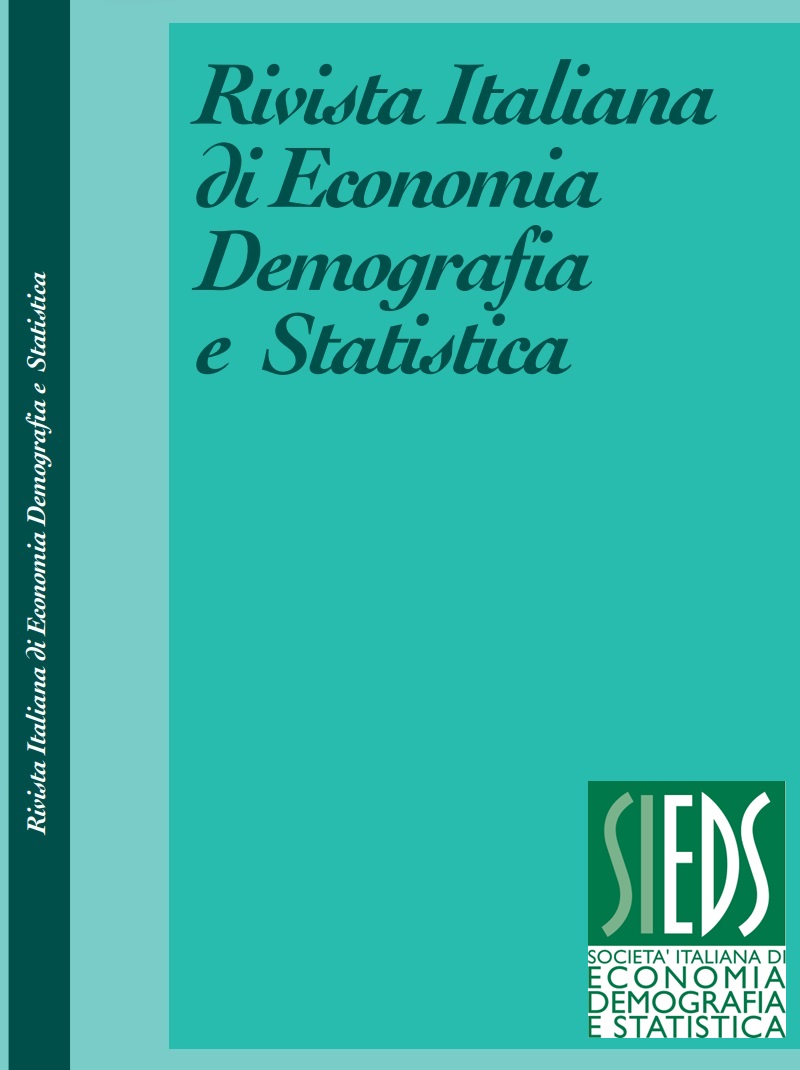Internal and international migration from Italian regions: old and new disparities
Abstract
In Italy, internal migration has strongly contributed to the population distribution across the country, with different types of residence change and showing an important gender gap, with men moving more than women do. In particular, emigration from the southern regions has always been an important component of Italian emigration both towards other local divisions and towards other nations. The present paper aims at investigating Italian migration in terms of flows from five macro areas towards both the rest of the country and at international level. The analysis focuses on gender differences controlling for all the sociodemographic characteristics of emigrants, both Italians and foreigners. We use ISTAT (Institute for National Statistics) data on residence change both among Italian departments and from/towards other countries for the period 1995-2019. In particular, we collect information about residence change by considering gender, type of move across the country (intra-province, intra-macro geographical area and inter-macro geographical area) and abroad, and macro-area of origin (North-West, North-East, Centre, South and Islands). The first step is a descriptive analysis through emigration rate comparison. As a second step, we employ a Poisson regression model to analyse emigration flows within the country (in the same province and department, as well as among different provinces and departments) and from/towards other nations, by considering both Italian and foreigners, and controlling for year, sex, macro geographical area, and type of move. Also, we consider both all the respondents as a whole and people grouped by age class (20-24, 25-29, 30-34, and 35-39). Results show that, in Italy, differences in emigration by gender, macro area of origin, and type of move still exist. However, the analysis suggests considering the role of age in shaping emigration flows in terms of both the different Italian macro areas of origin and the type of residence change (by gender).
Downloads
Published
Issue
Section
License
Copyright (c) 2022 Maria Herica La Valle, Francesca Licari, Maria Sole D’Orto, Cecilia Reynaud

This work is licensed under a Creative Commons Attribution 4.0 International License.



